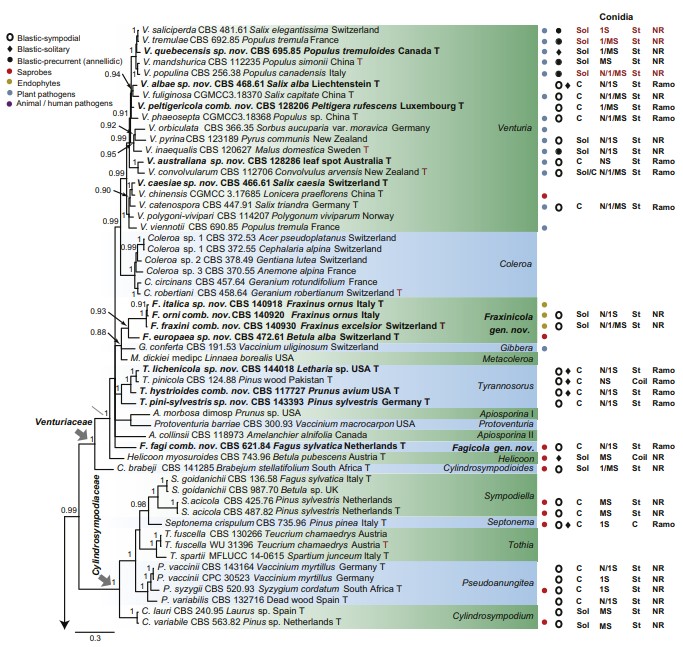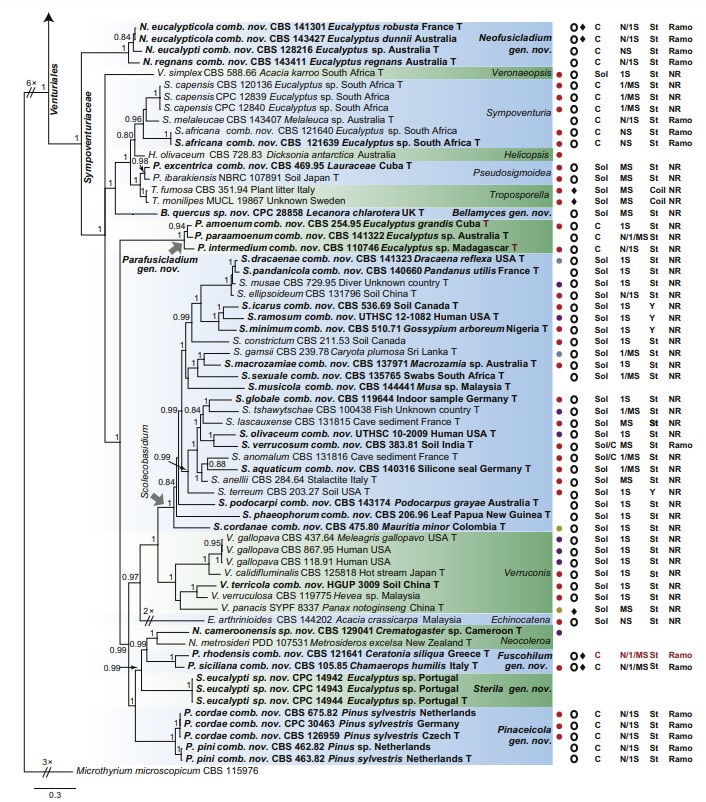Bellamyces Crous, Coppins & U. Braun, gen. nov.
Index Fungorum number: MB831519; Facesoffungi number: FoF 12034
Etymology: Named after “Bella”, the beautiful dog that always accompanies Brian J. Coppins on his lichen excursions.
Mycelium consisting of branched, septate, medium brown, smooth hyphae. Conidiophores erect, brown, smooth, sub- cylindrical, straight to geniculate-sinuous, reduced to con- idiogenous cells, or 0– 1-septate. Conidiogenous cells terminal, subcylindrical, brown, smooth, proliferating sympodially and inconspicuously 1– 2 times percurrently at apex. Conidia solitary, brown, smooth, subcylindrical, straight, widest in middle to lower third, apex subobtuse, transversely euseptate, rarely with 1– 2 oblique septa; hila truncate, neither thickened, nor darkened.
Type species: Bellamyces quercus Crous, Coppins & U. Braun
Note: Phylogenetically, Bellamyces quercus clusters basal to Sympoventuria, Pseudosigmoidea and Troposporella (Fig. 1).

Fig 1. Consensus phylogram (50 % majority rule) of 691 952 trees resulting from a Bayesian analysis of the combined alignment of ITS, LSU, tef1, tub2 and rpb2 sequences of Venturiales. Bayesian posterior probabilities (PP) > 0.80 are shown at the nodes and the scale bar represents the expected changes per site. Some branches were shortened to facilitate layout. The tree was rooted with Microthyrium microscopicum (CBS 115976). Culture collection numbers, substrates and countries are indicated behind the species names. Those highlighted in bold are new taxa or new combinations proposed in this study, and type strains are marked with “T” (ex-type in black, ex-epitype in red). Relevant morphological characteristics plotted are abbreviated as follows: Sol – conidia solitary, C – conidia in chains, NS – aseptate conidia, 1S – 1-septate conidia, MS – multi- septate conidia (septa ≥ 2), St – straight or slightly curved conidia, Coil – coiled conidia, Y – Y-shaped conidia; Ramo – ramoconidia present, NR – ramoconidia not observed;
? – asexual morphology not available (either from references or from sporulation induced in this study); and morphological characters plotted in red means strains failed to sporulate in this study and plotted values are taken from the original description, observation of this study or related references. Other characteristics are explained in the legend.

Fig 1. (Continued).
Species
